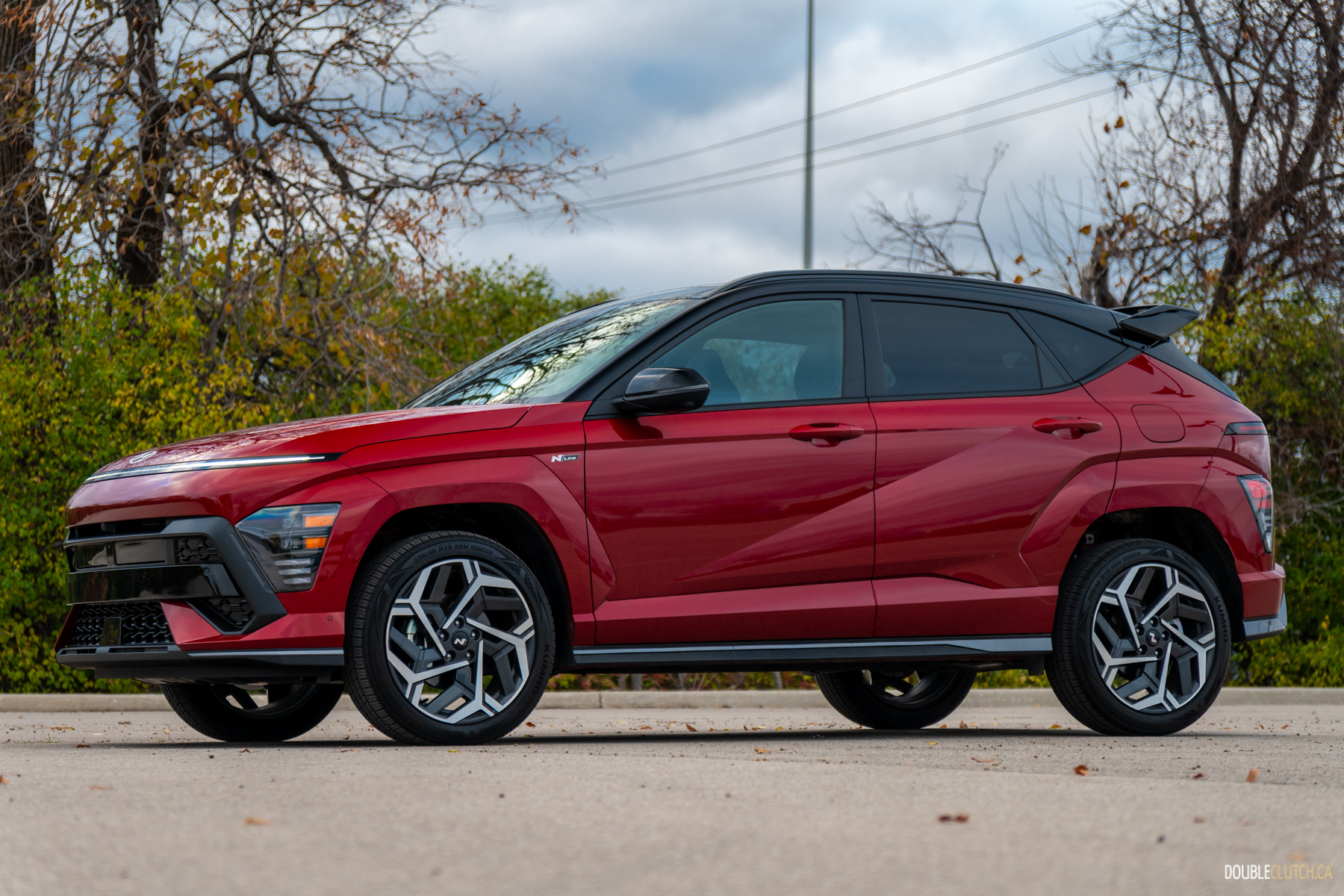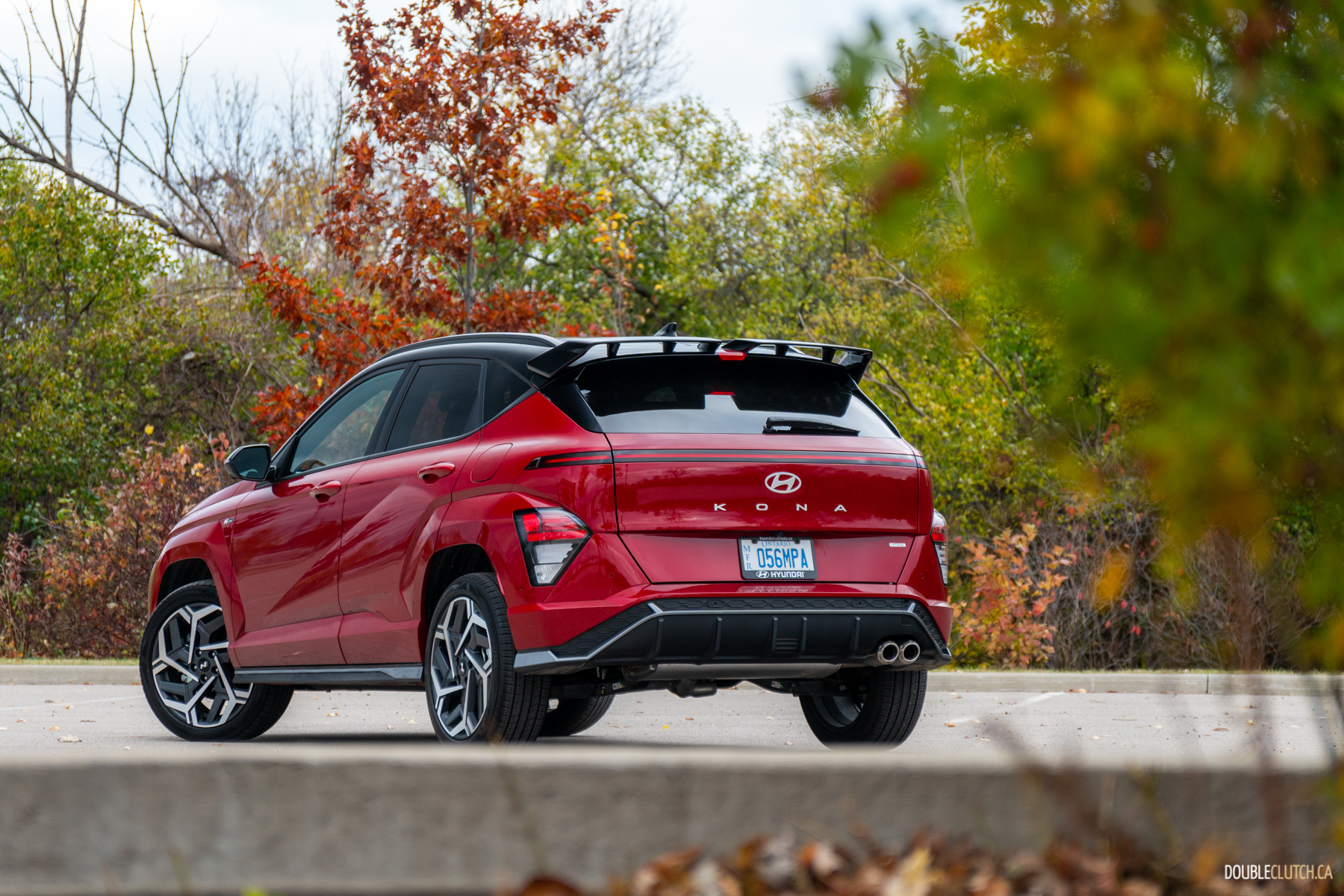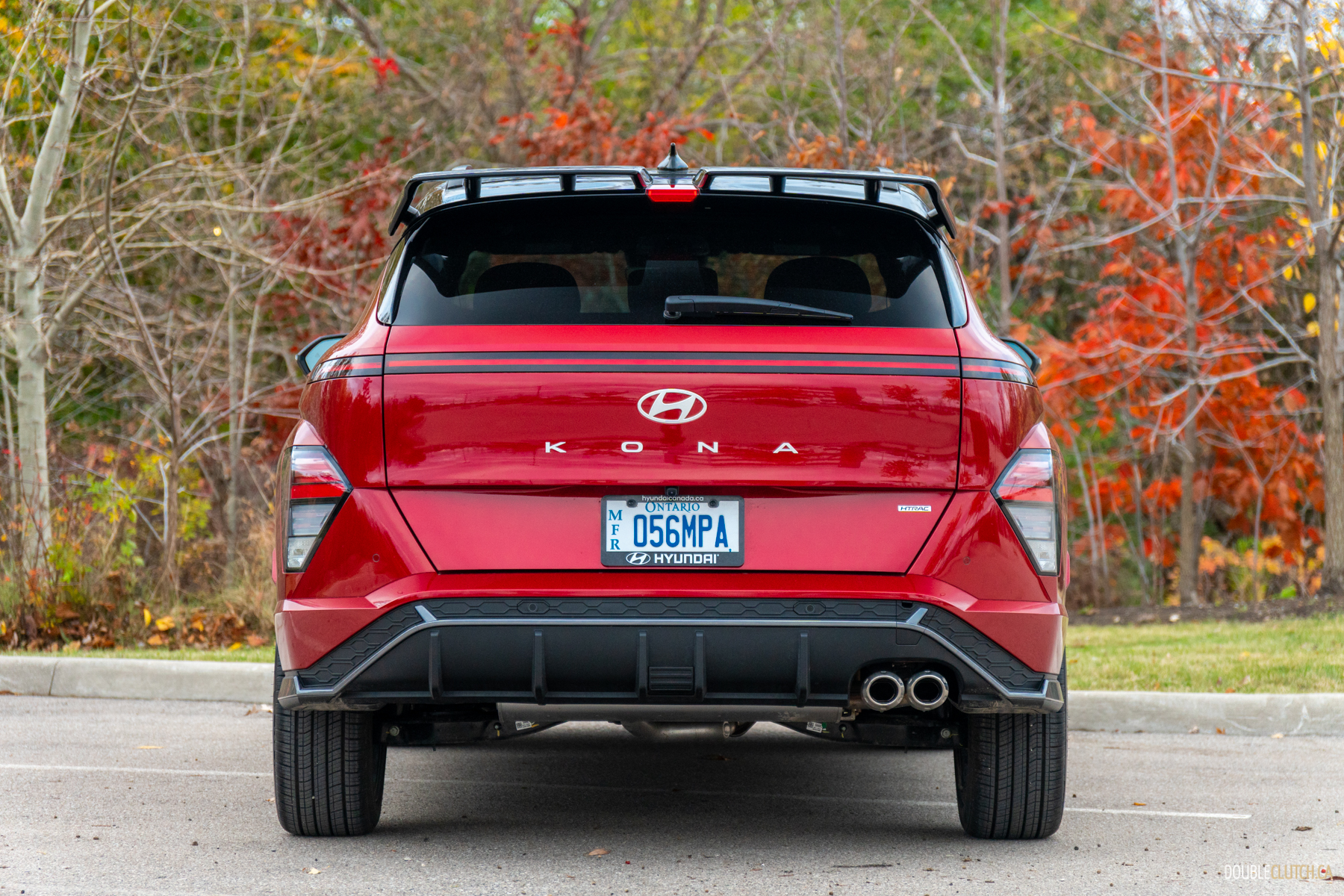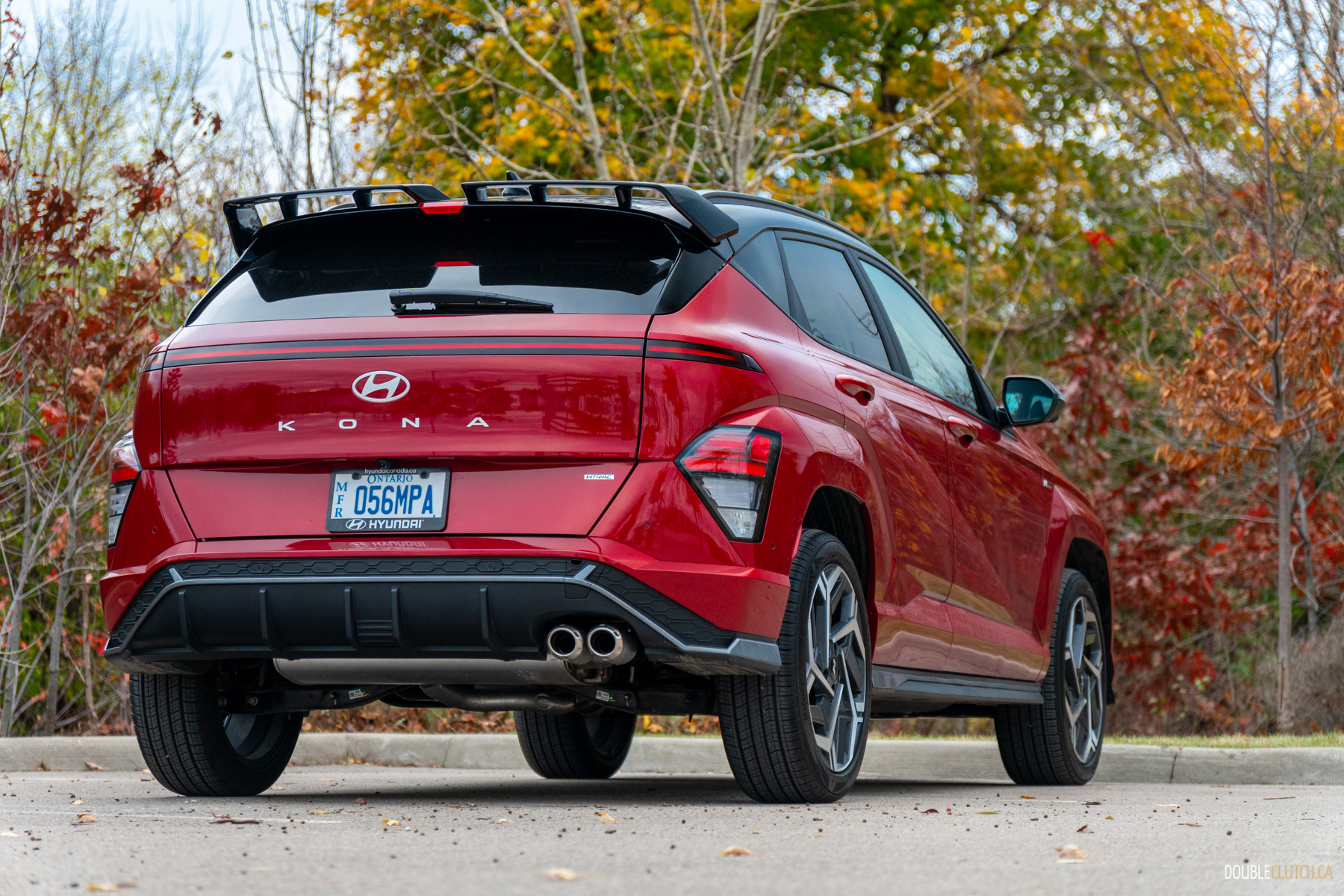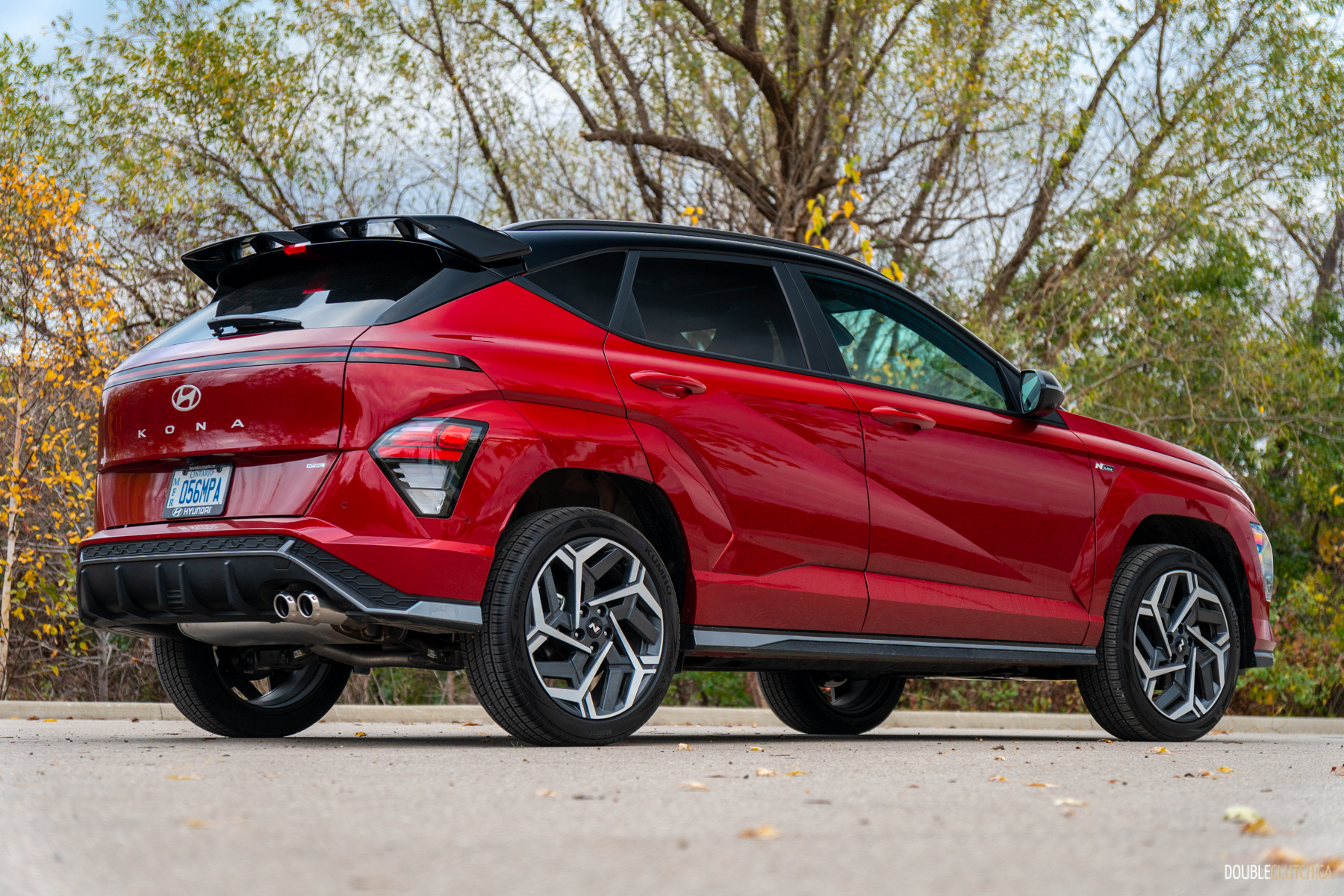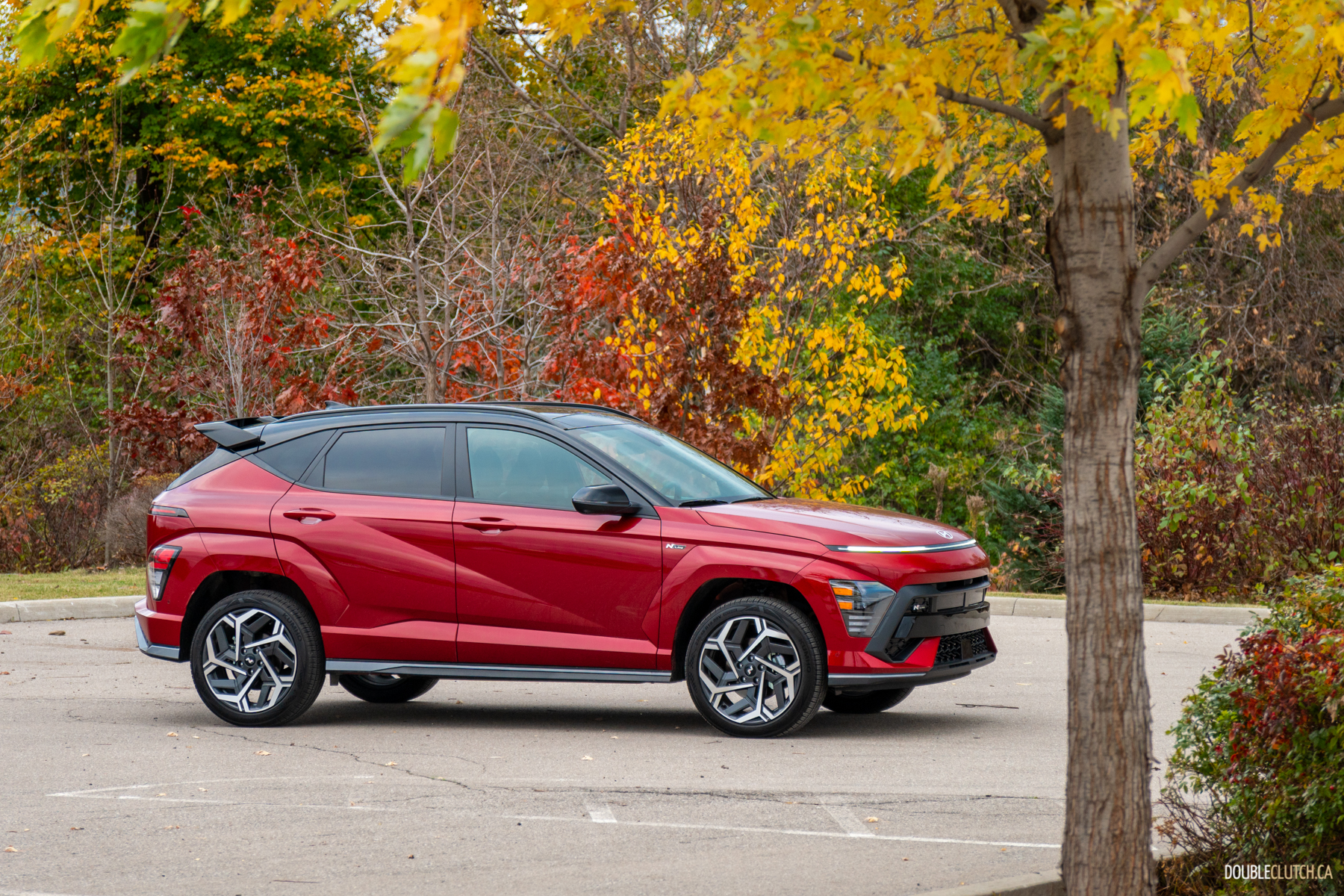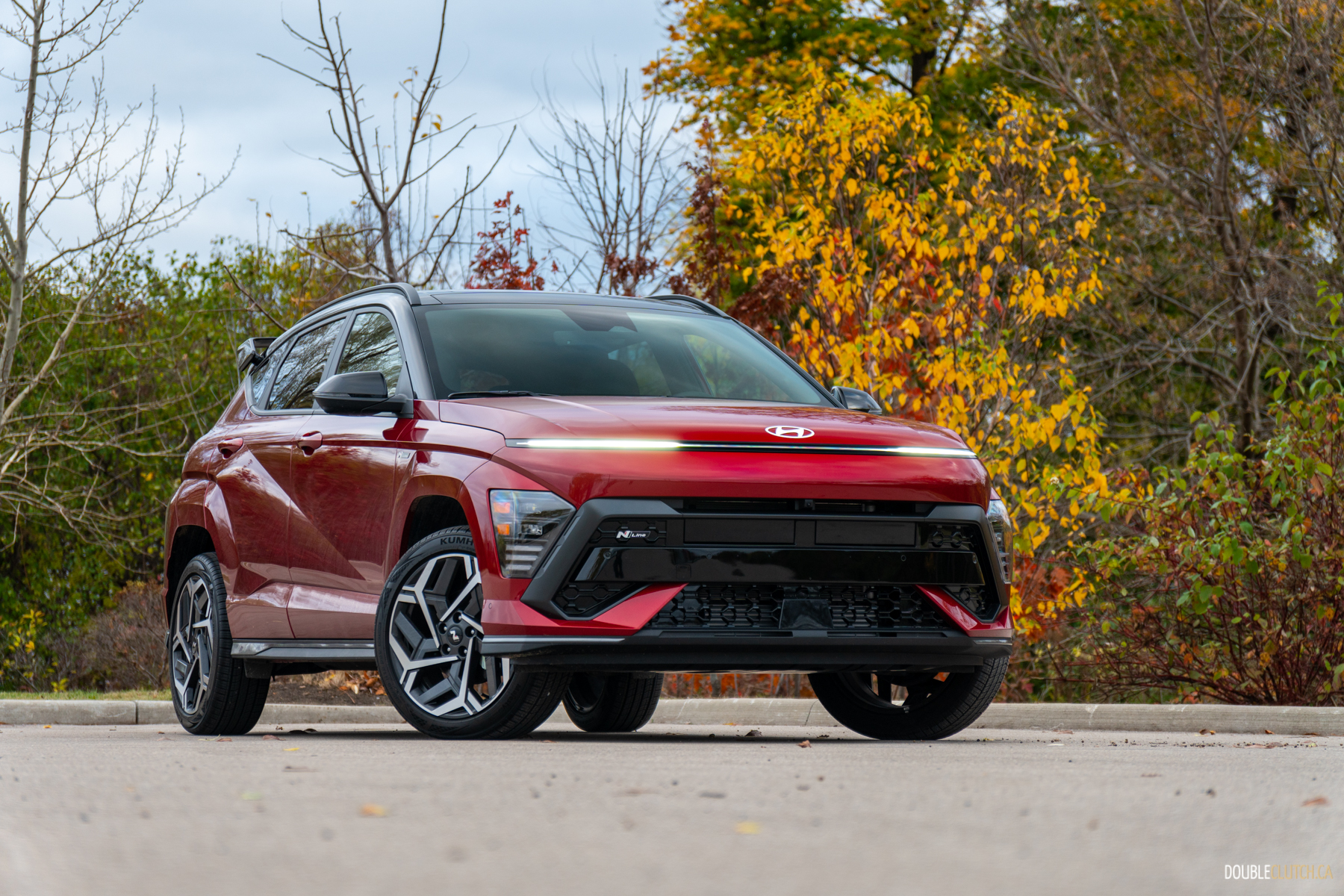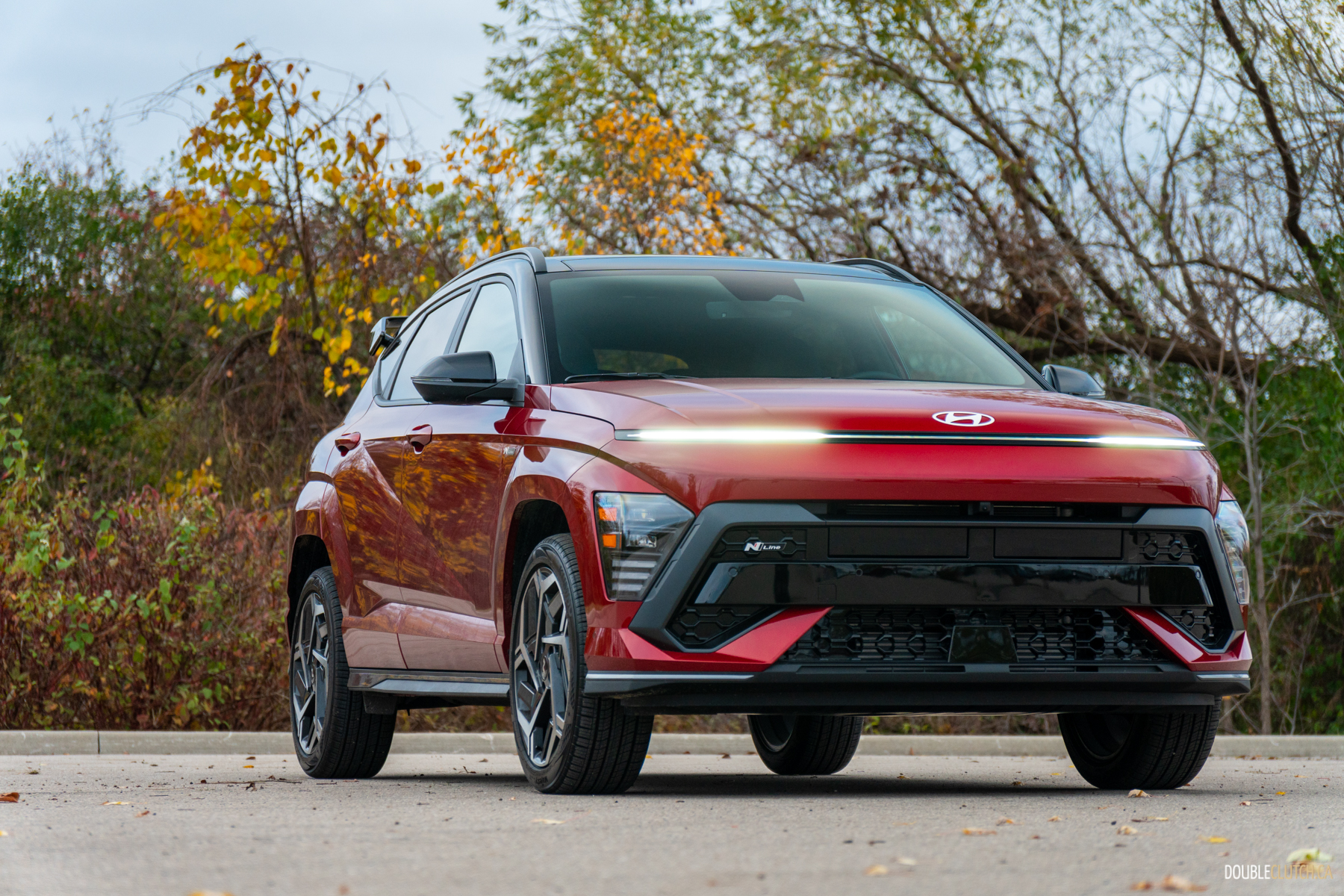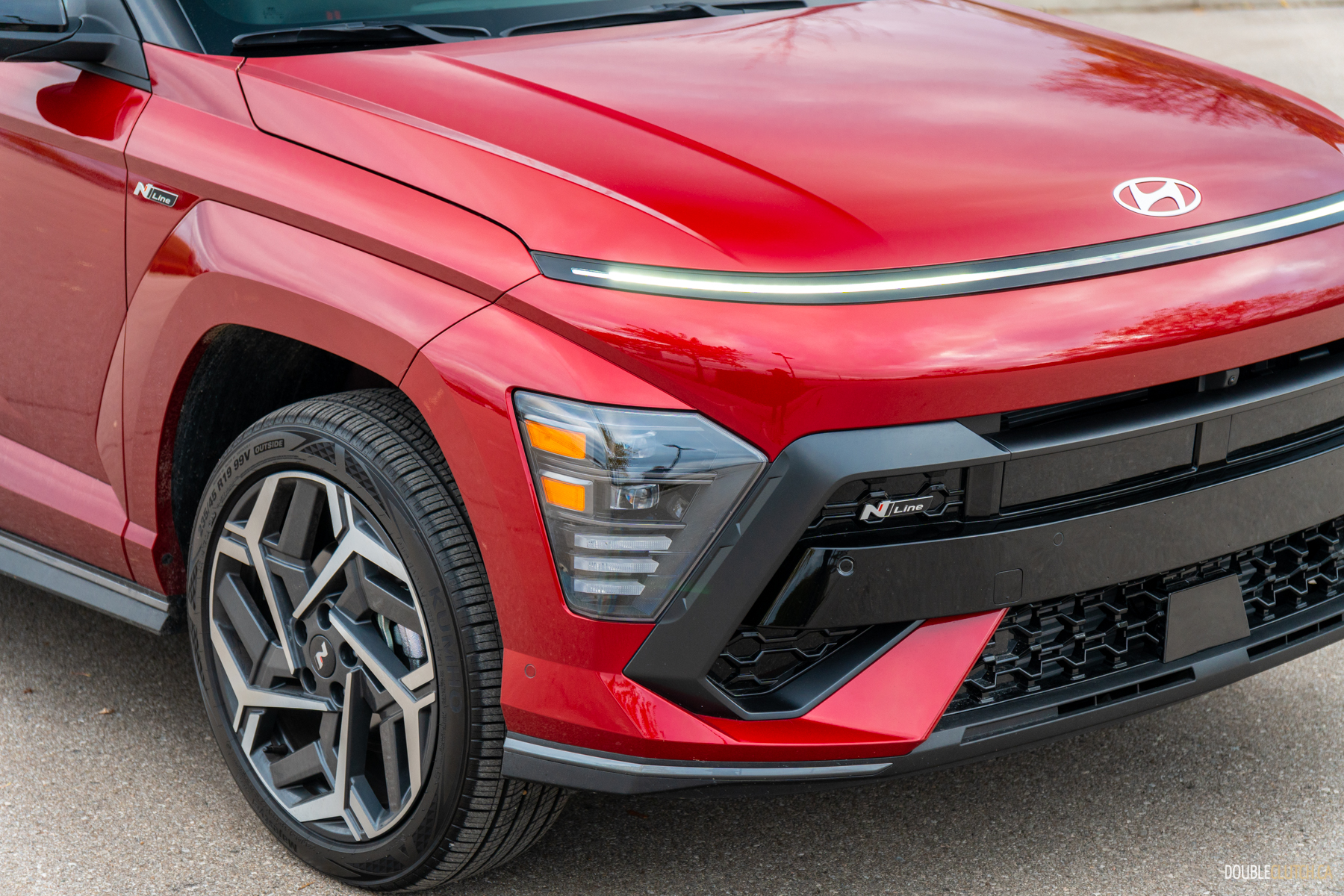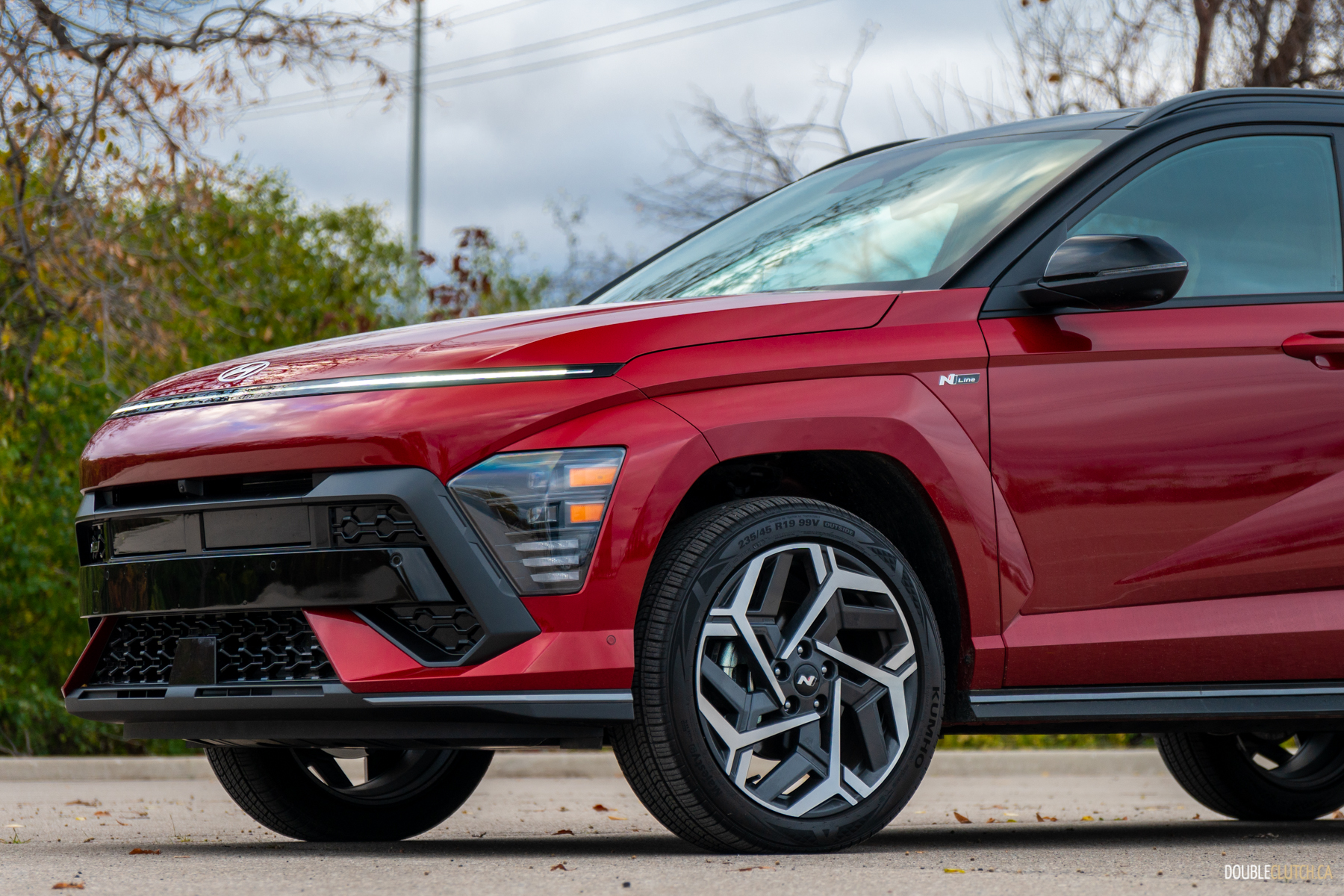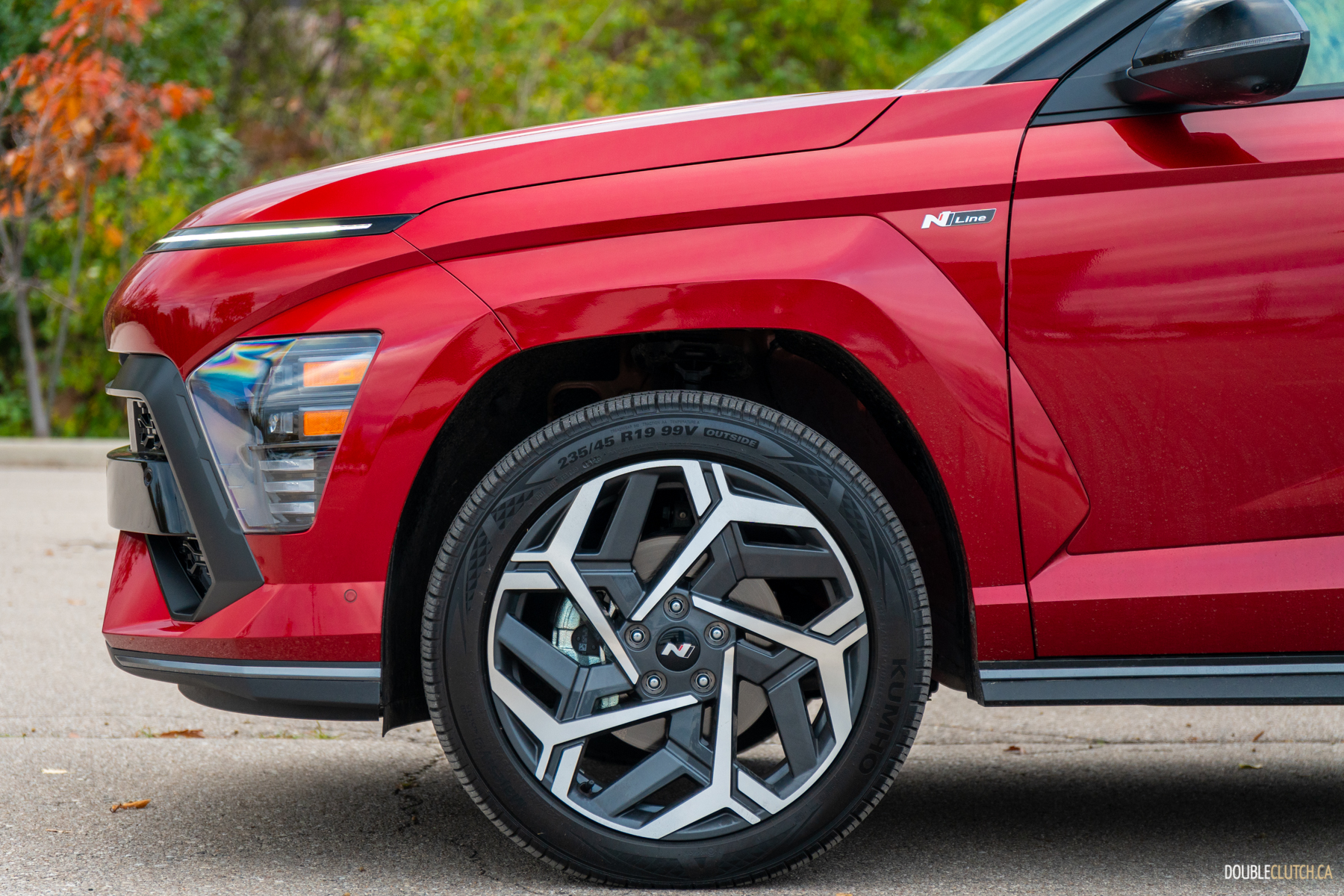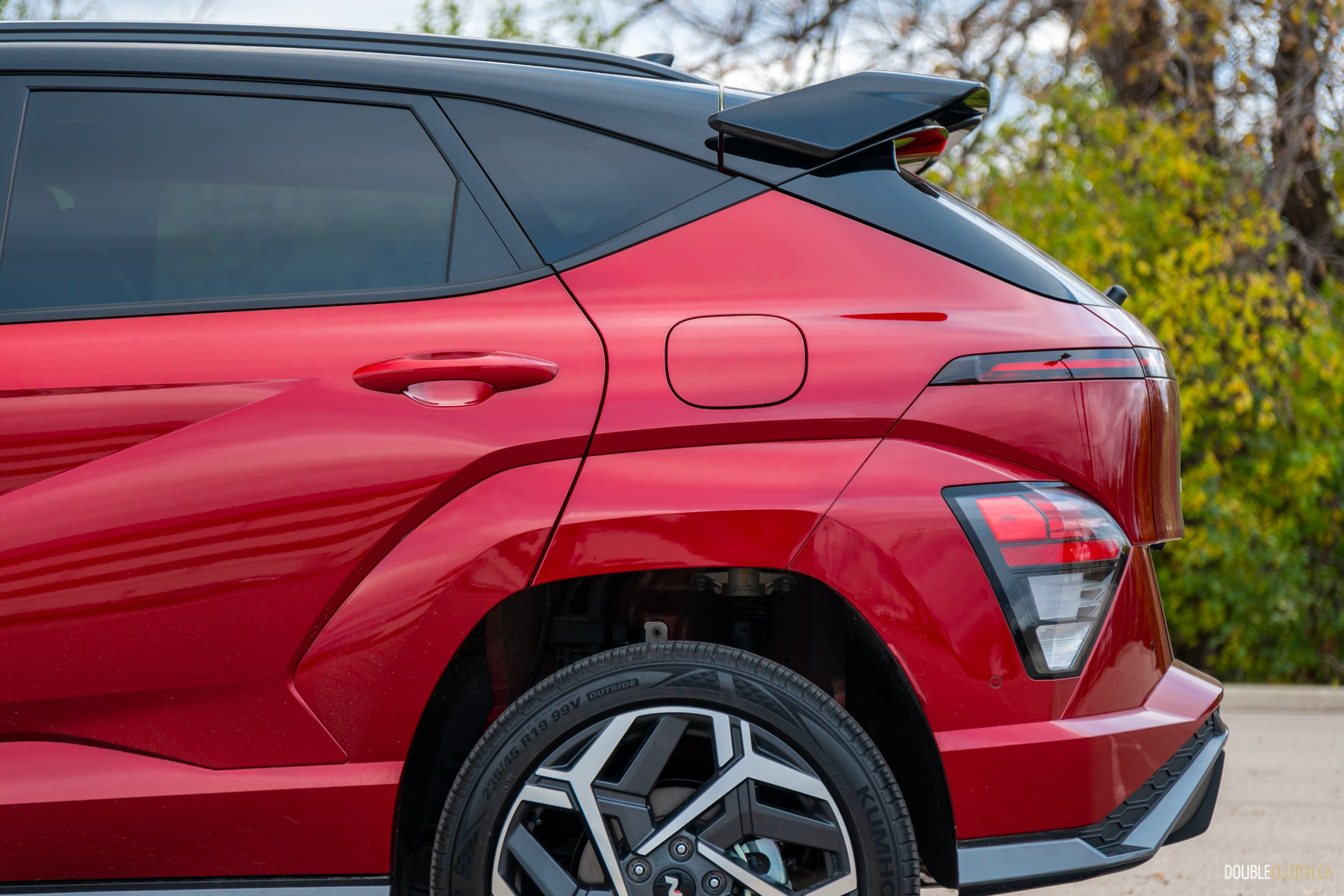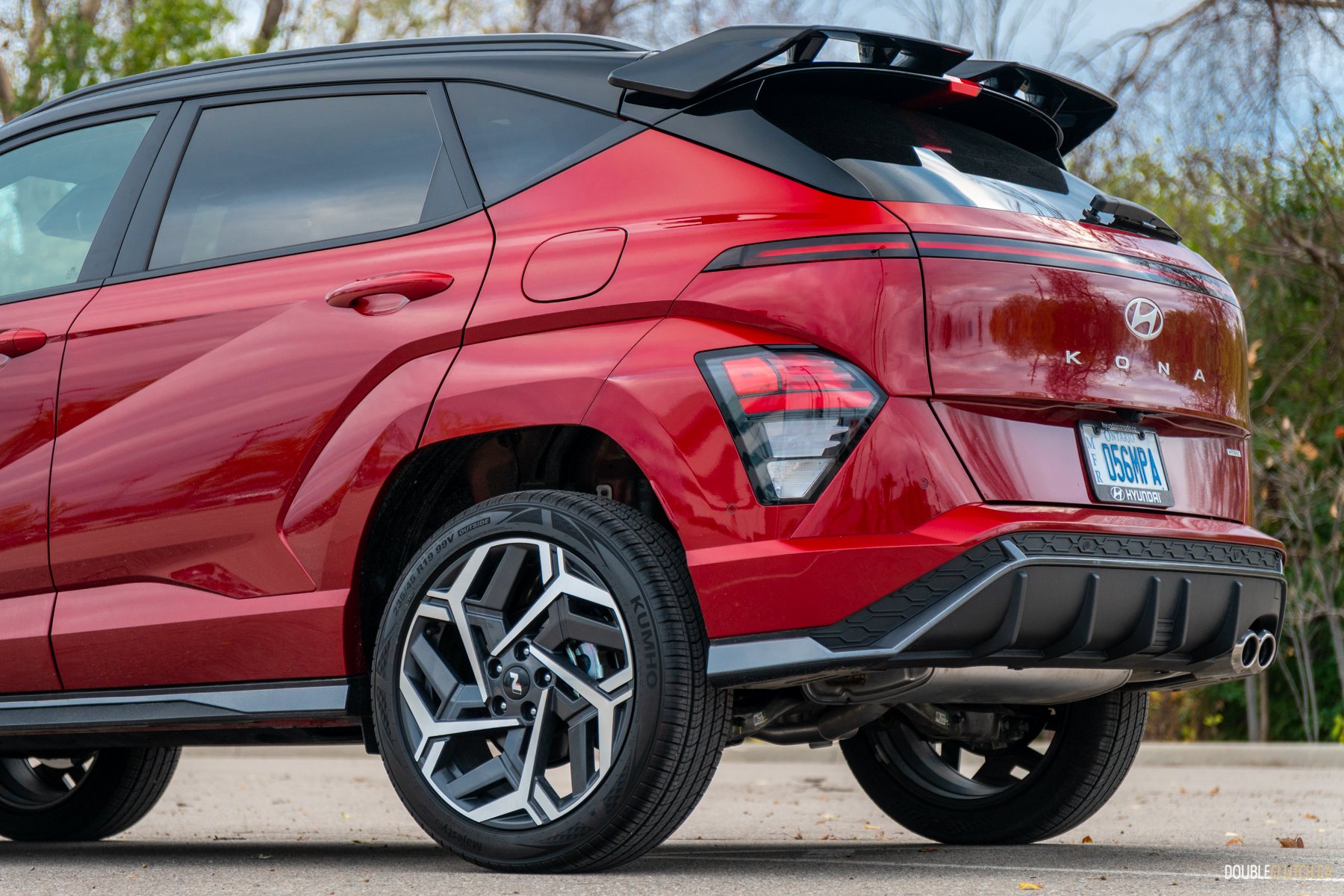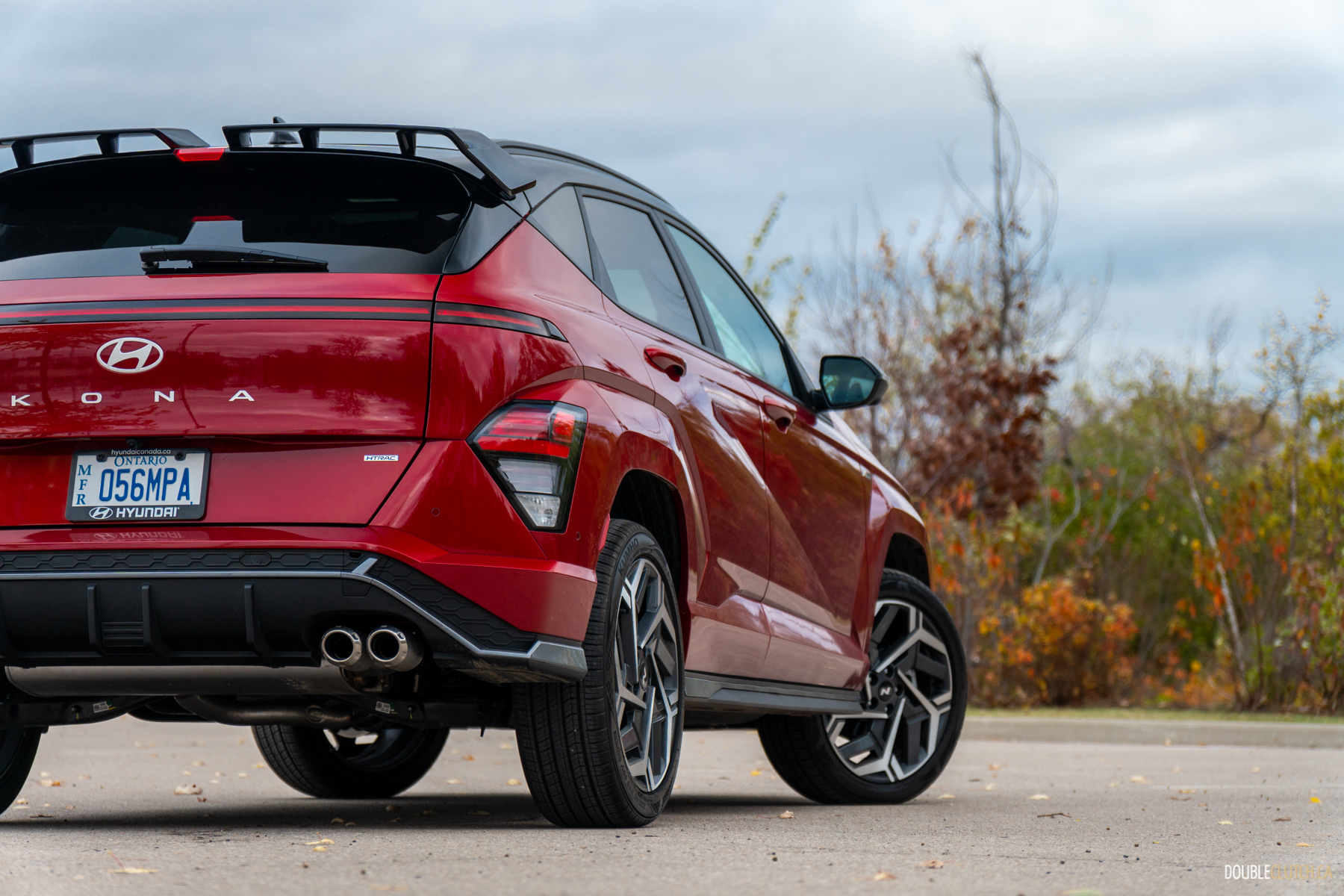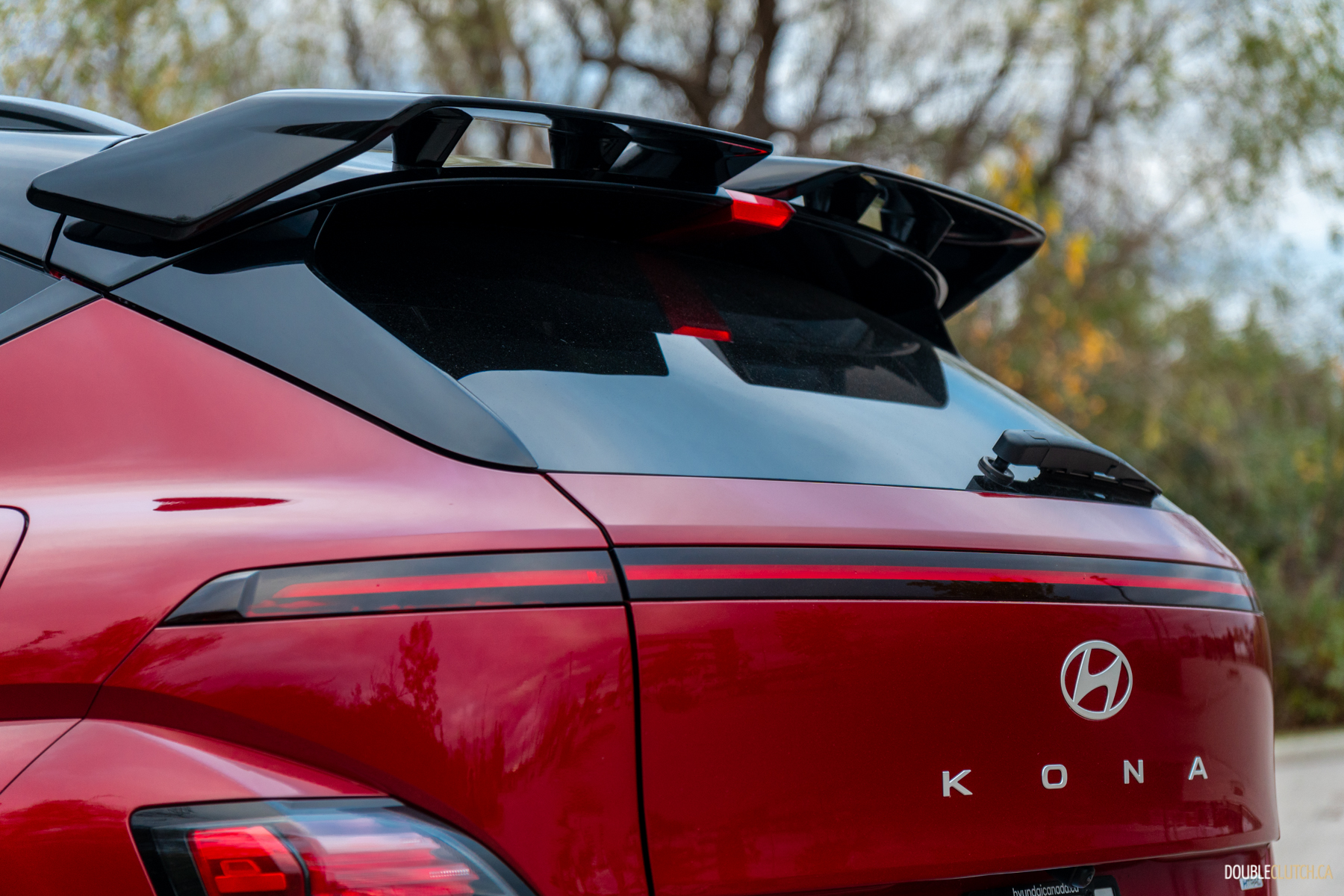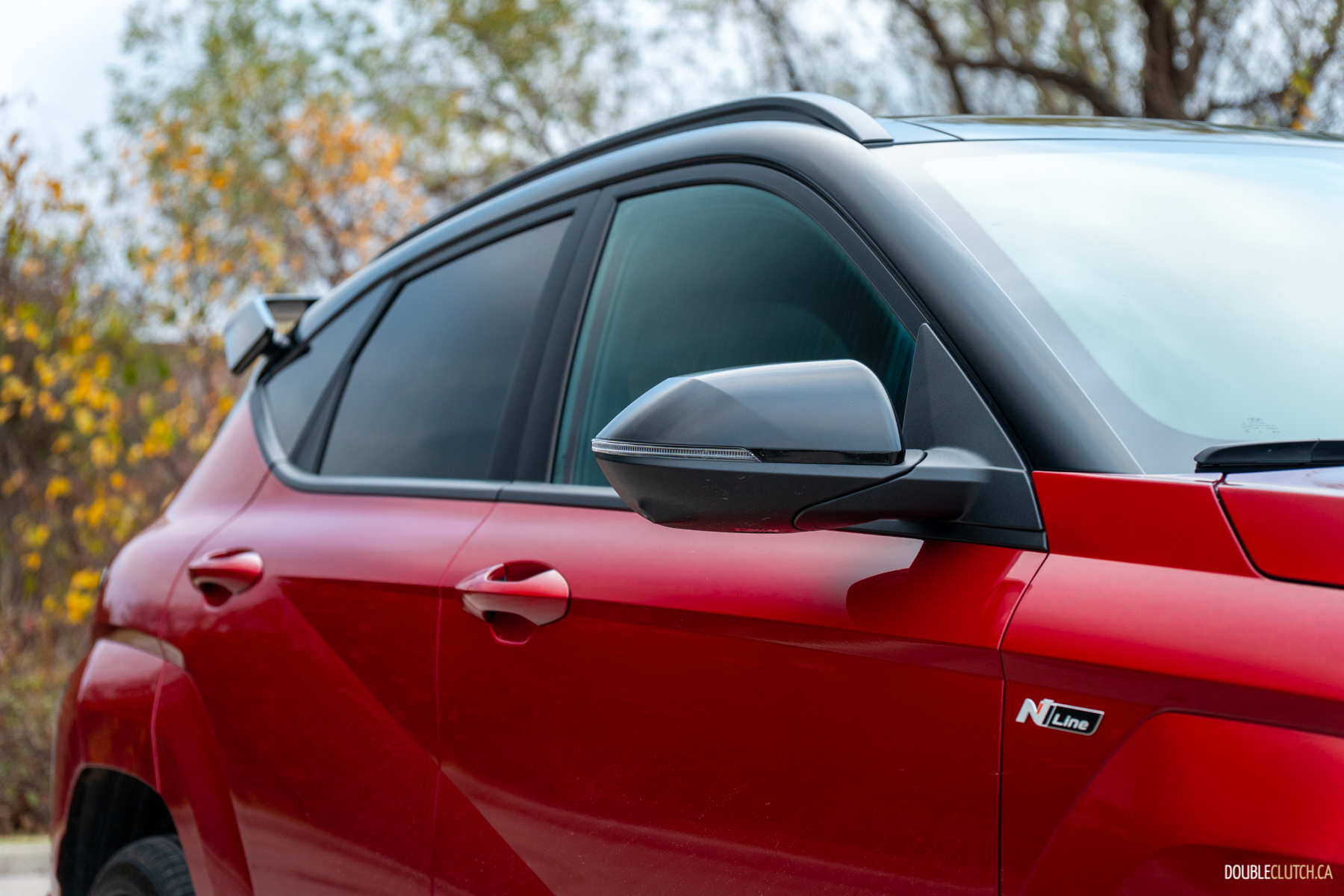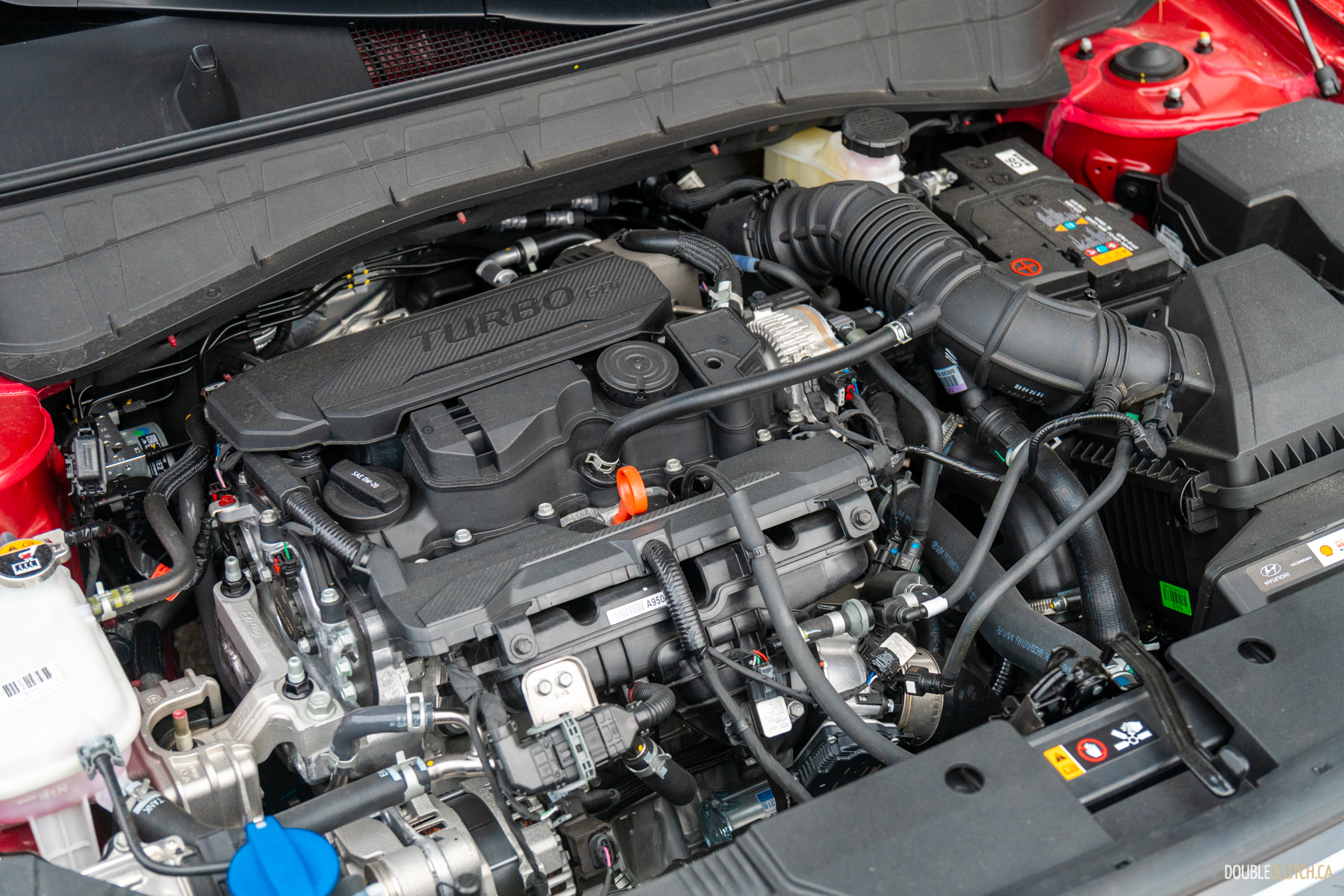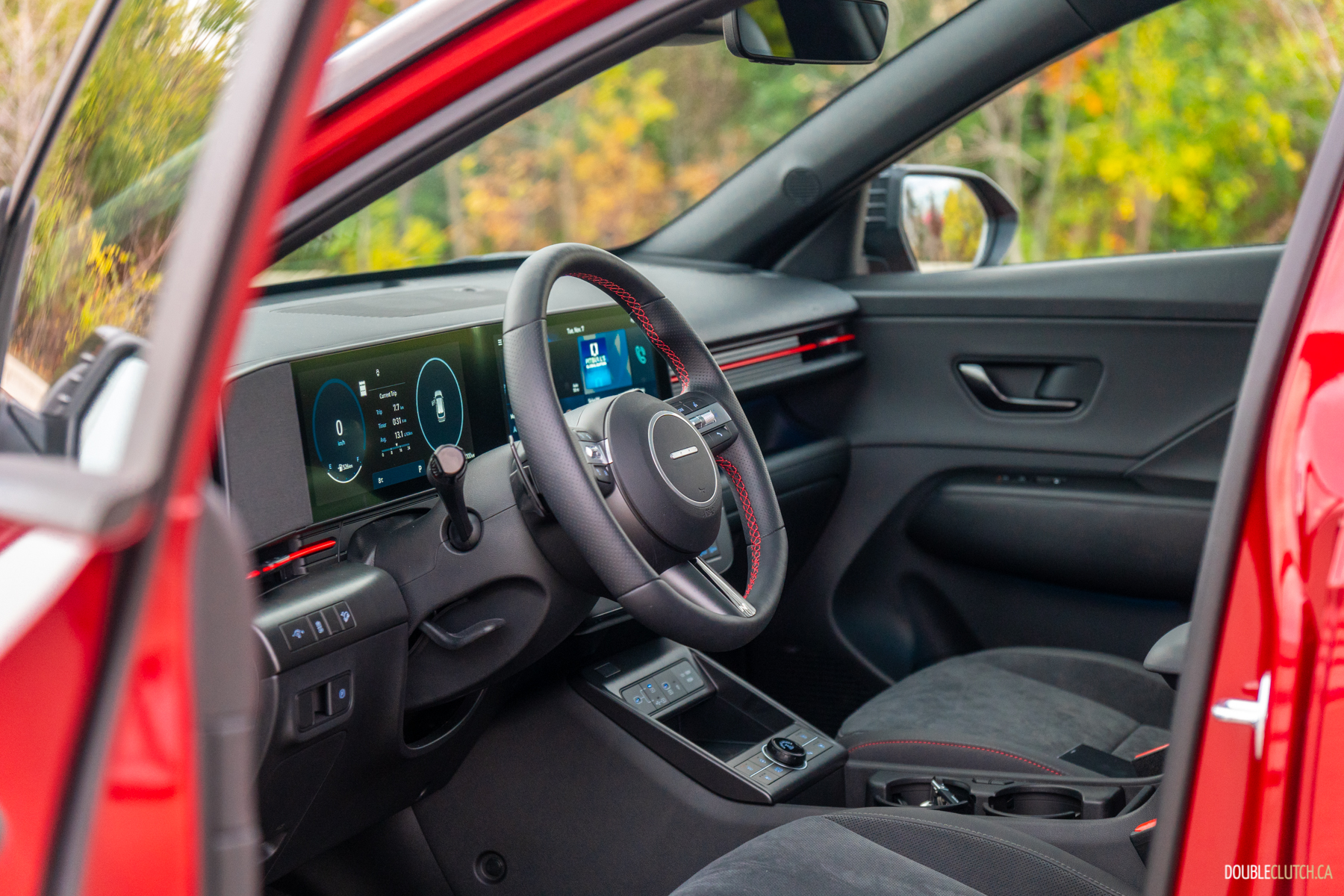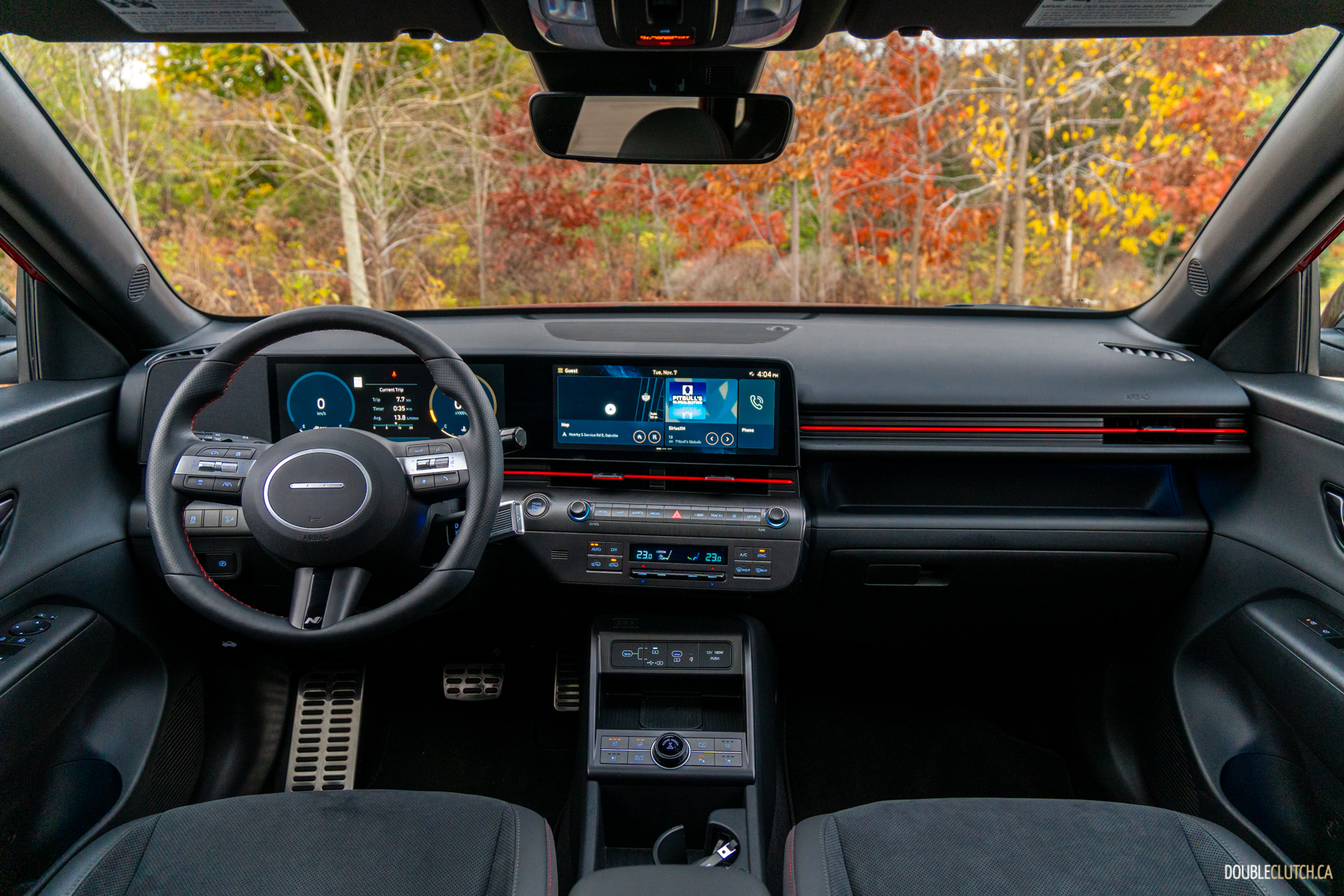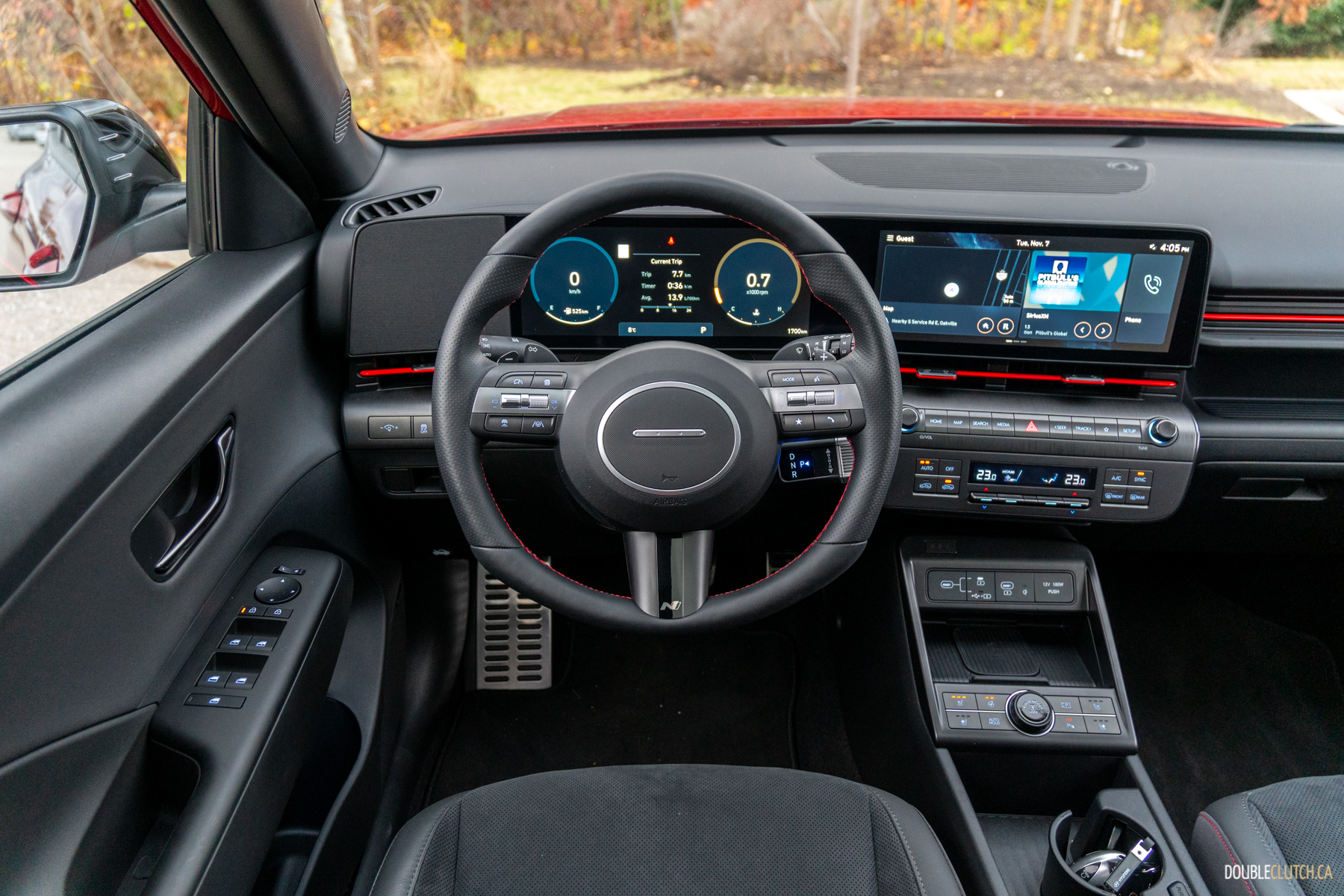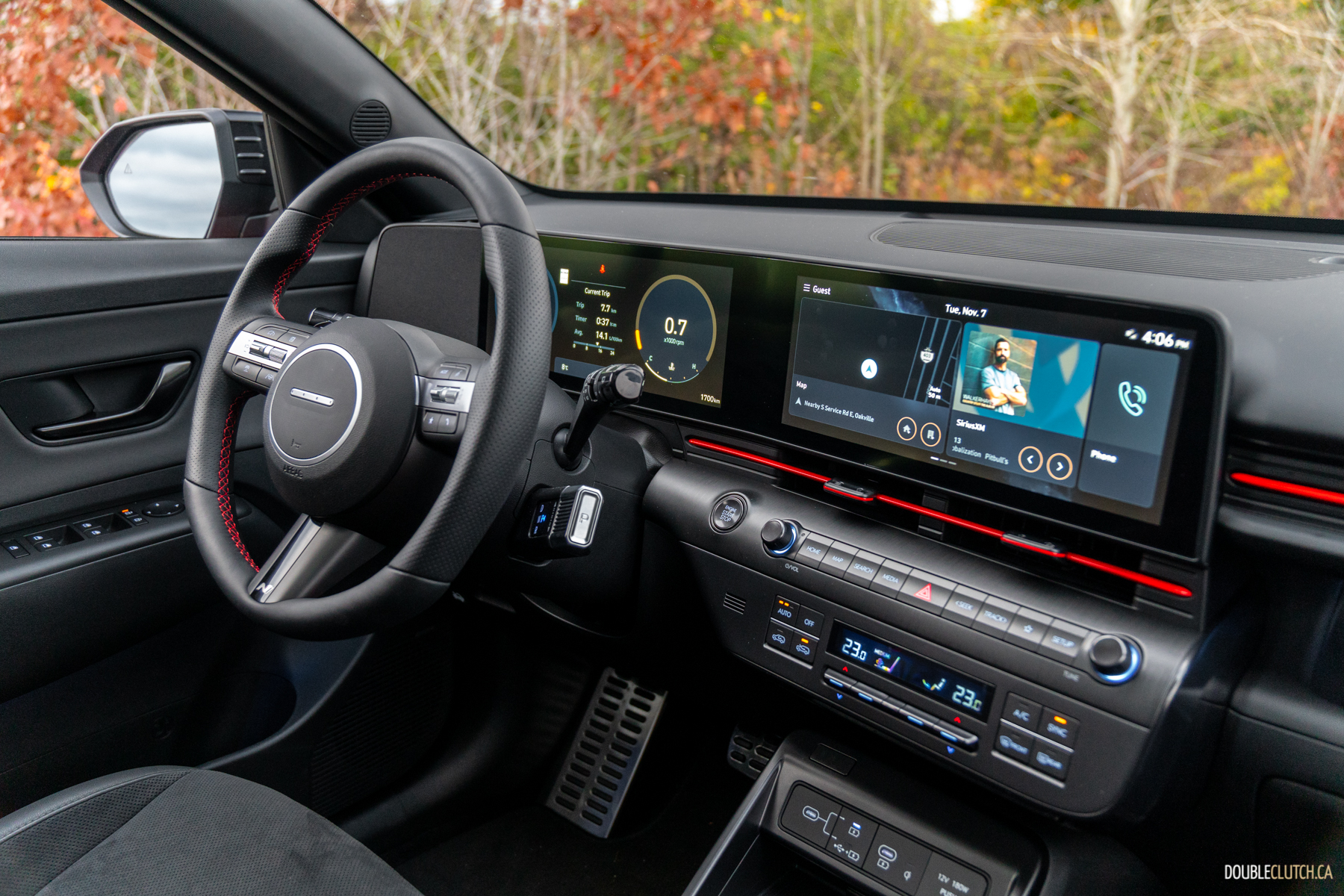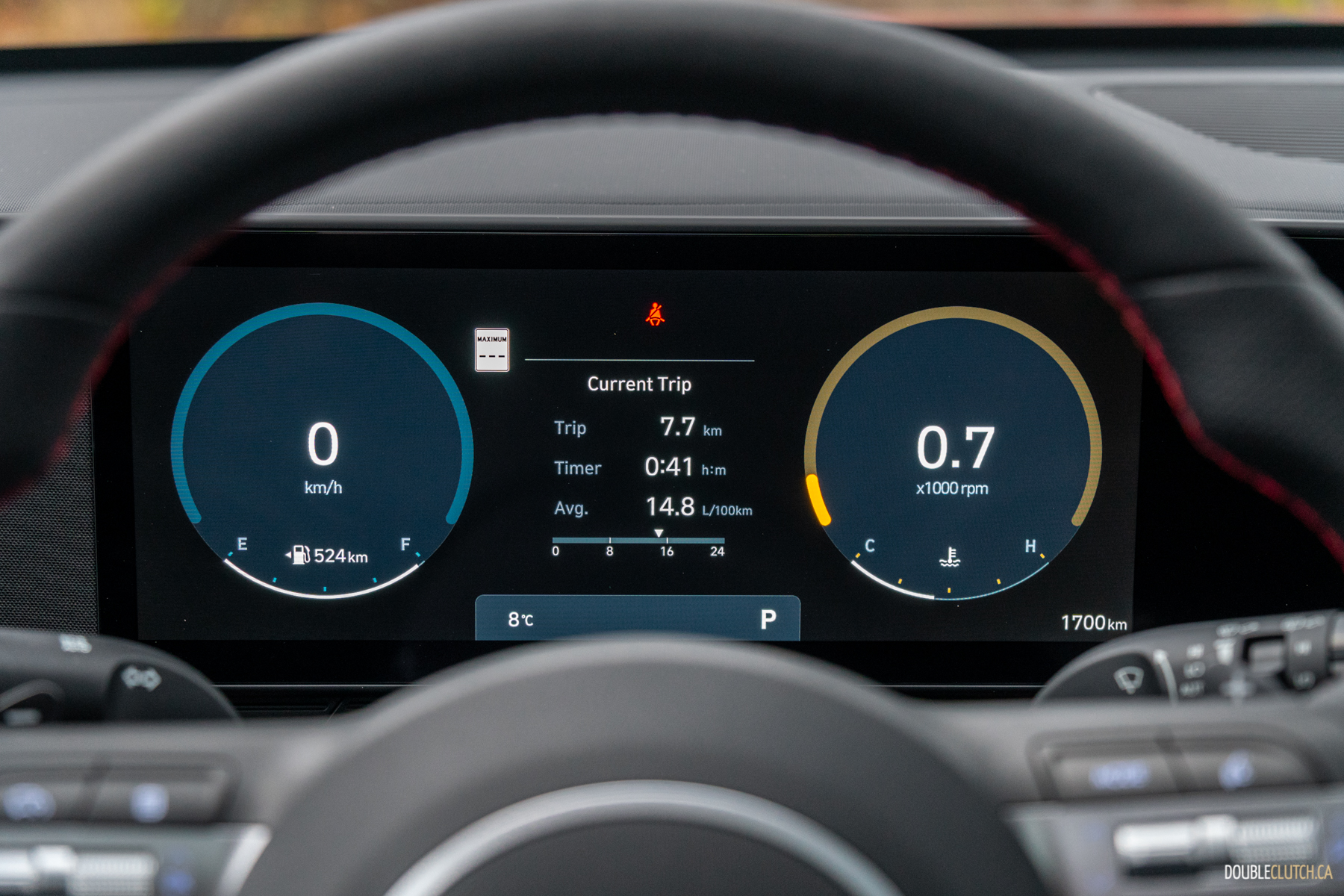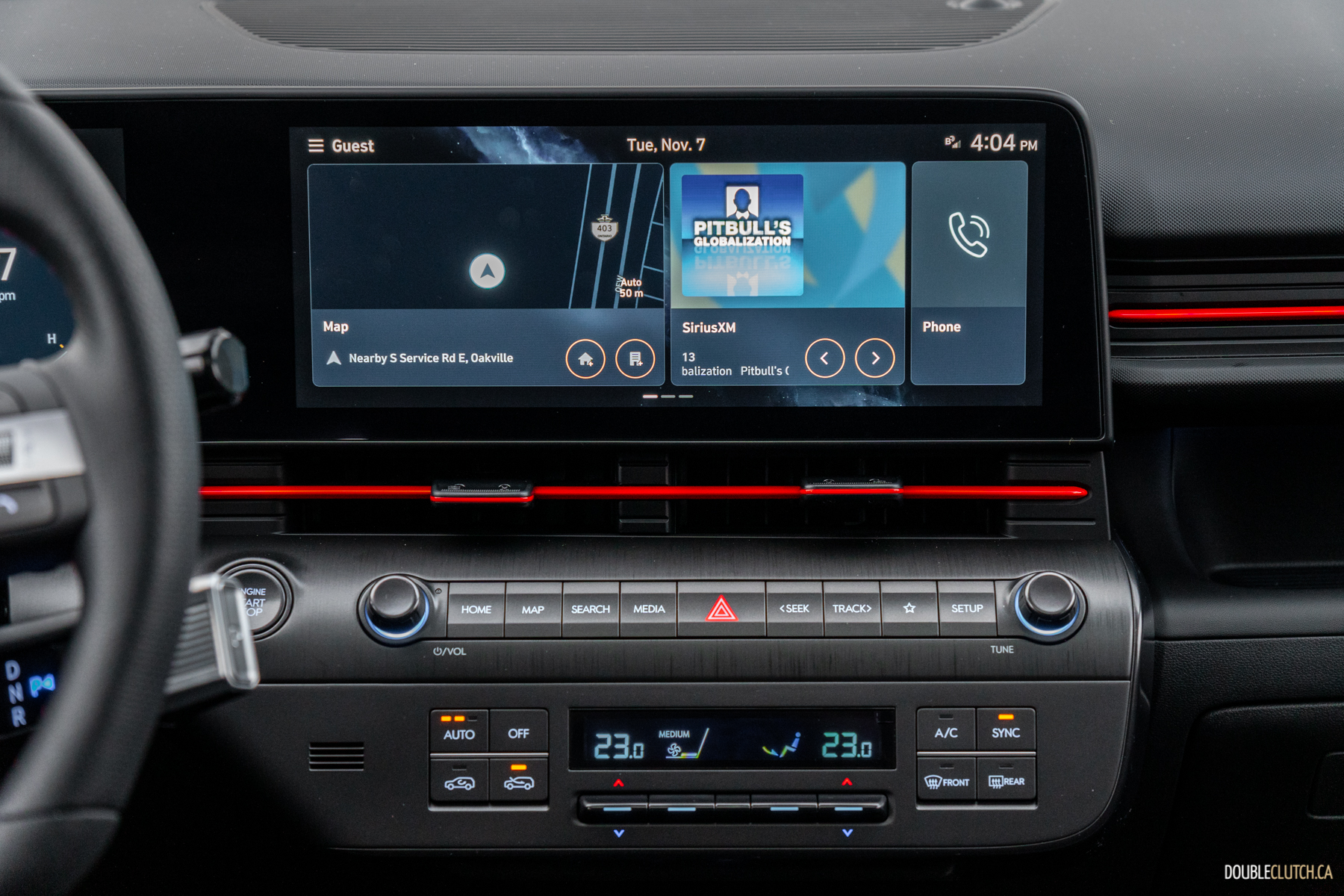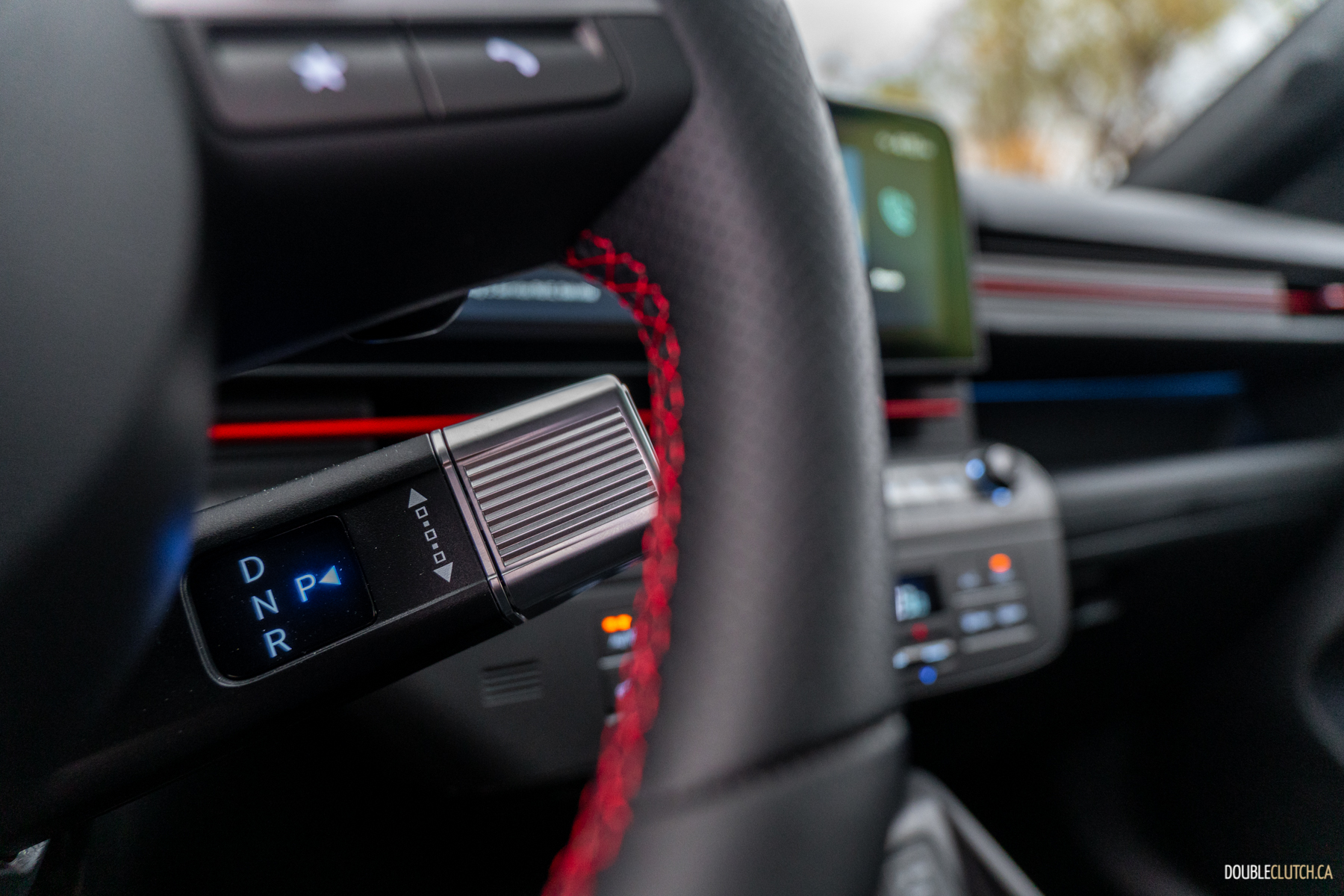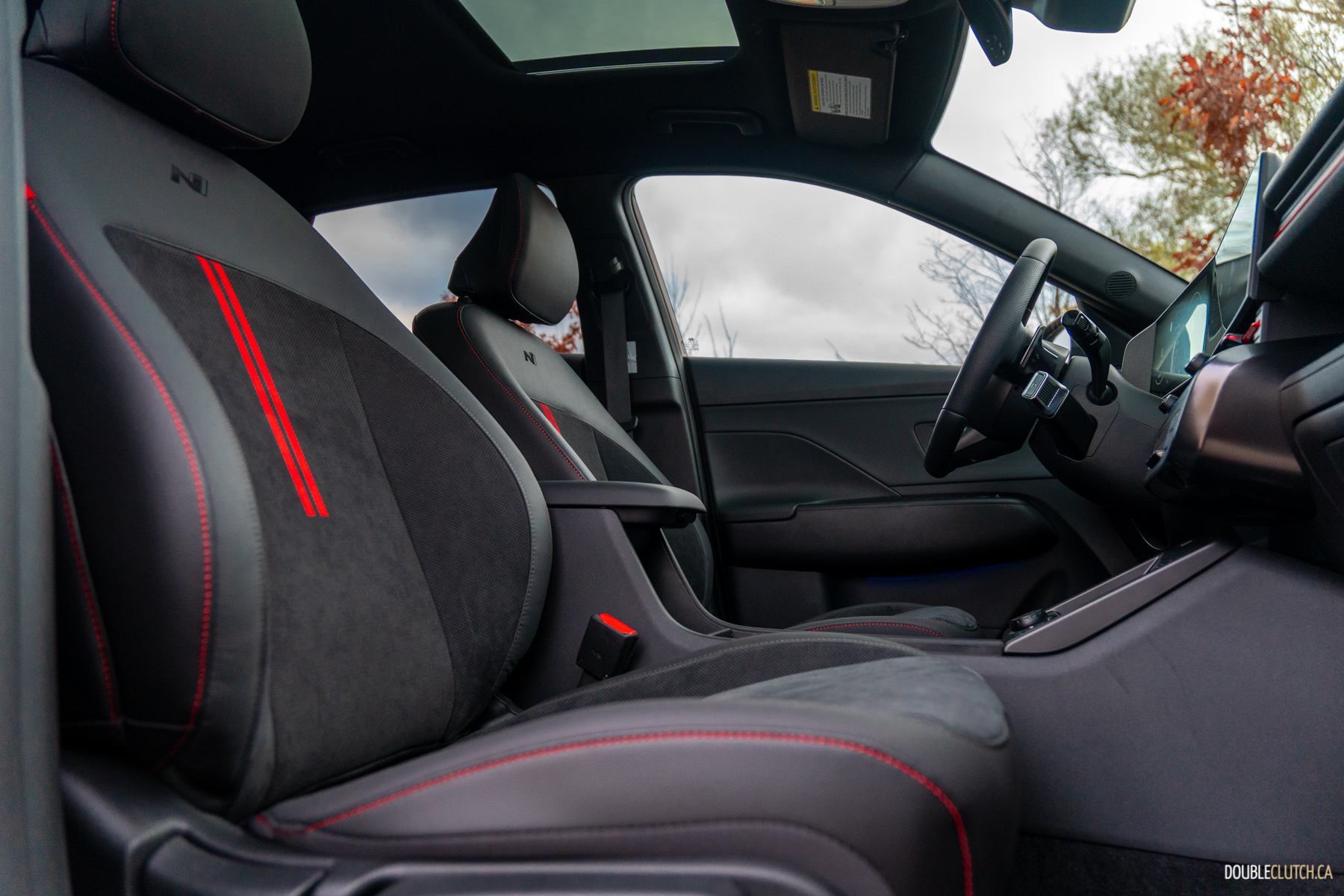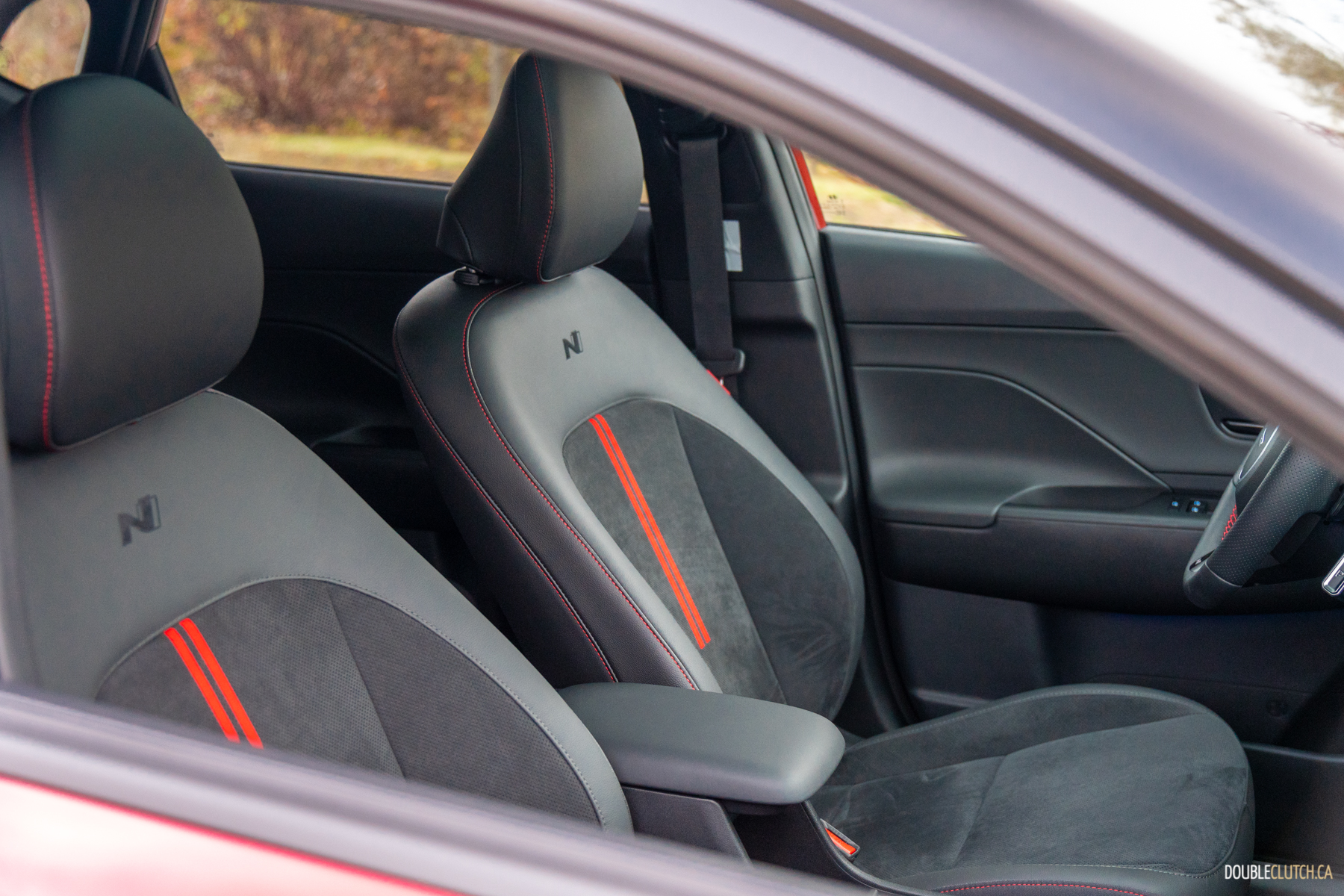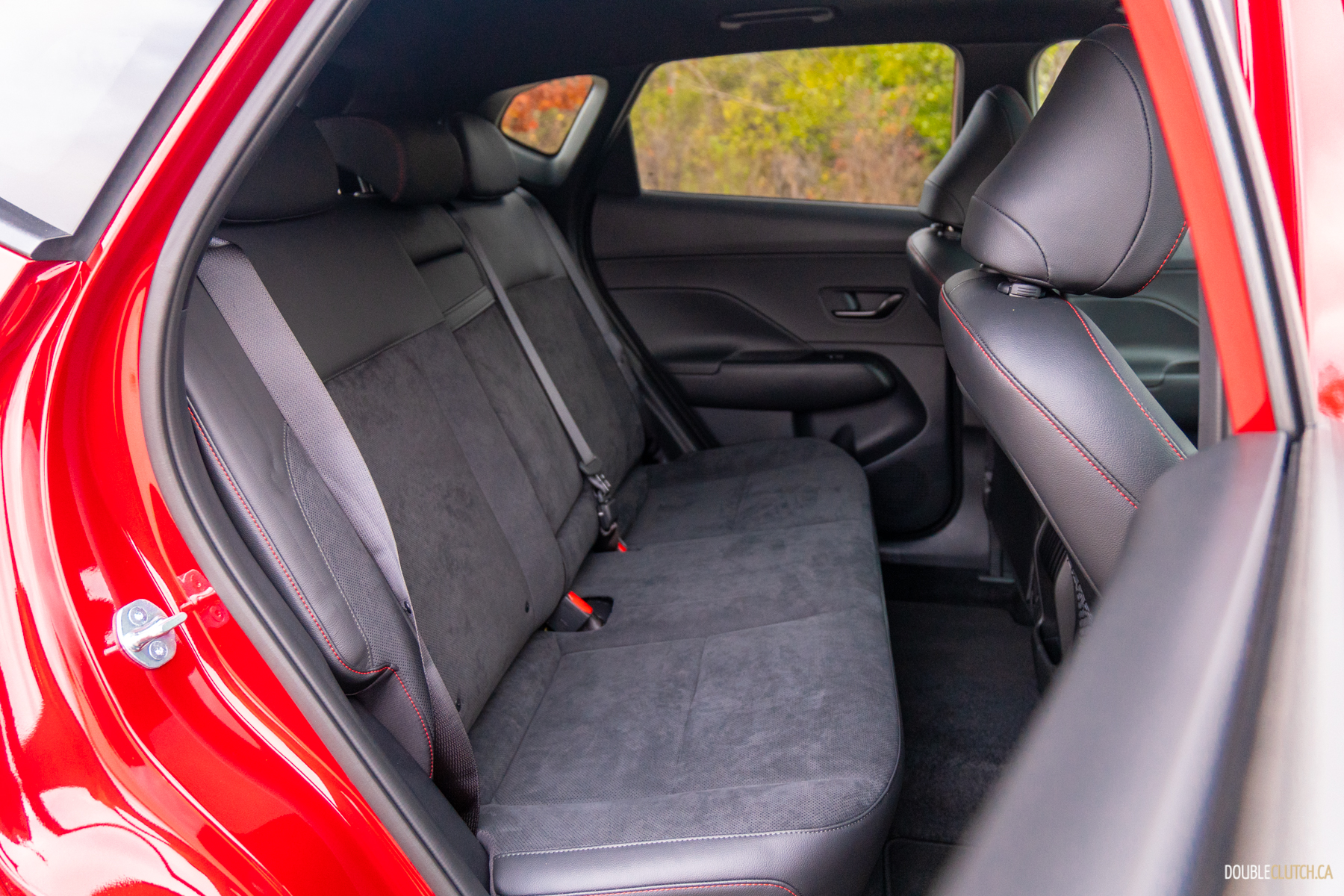Shortly after Hyundai released the first-generation Kona, it took almost no time at all for customers to gobble them up, making it a top seller in the subcompact crossover segment and Hyundai’s lineup as a whole. Five years later, the 2024 Hyundai Kona N-Line is all-new and we can’t help but wonder: does it retain the qualities and charm that made its predecessor so successful?
Full disclosure: I used to own a 2018 Hyundai Kona, so I’m going to draw on my personal experience as well when comparing the first- and second-generation versions. Hyundai has made some significant changes inside and out, growing in size from a truly subcompact crossover to a subcompact-in-name-only, not unlike its sibling, the Kia Seltos. Hyundai also designed the 2024 Kona as an EV first and foremost, shoehorning in the internal combustion engine later on in the Kona’s development cycle.
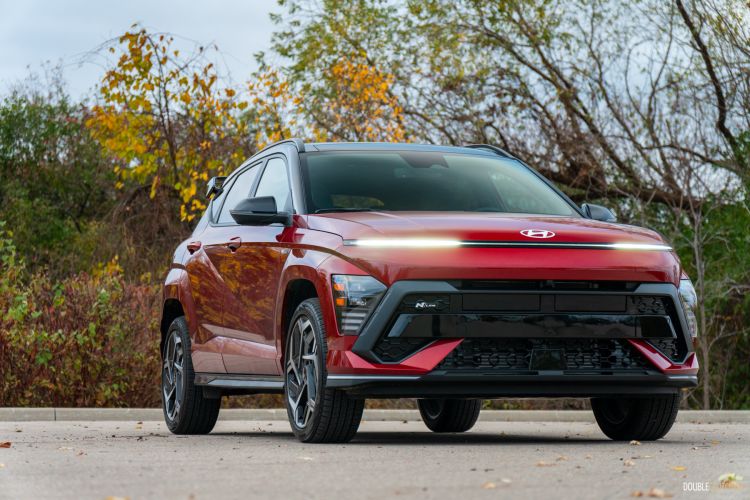
The 2024 Kona’s new design is decidedly more futuristic than its quirky-looking predecessor. Some cues carry over, like the split-headlights up front, but the Robocop-like LED light bar spanning the front end — with a matching light bar out back — make the previous Kona look dorky by comparison. Down the side, the new Kona wears similar creases and character lines as the Tucson. Our N-Line tester features 19-inch wheels, a unique rear spoiler, and a somewhat aftermarket-looking dual chrome exhaust tip that somewhat cheapens the look. Personally, I’m not big on the 2024 Kona’s new look just yet, but based on the sales numbers, I seem to be in the minority.
The 2024 Kona features 8.3 inches of ground clearance, bested only by the also-new-for-2024 Subaru Crosstrek, at 8.7 inches. Compared to the outgoing Kona, the 2024 model is taller and wider by an inch, and longer by six inches overall, so complaints over interior space should no longer be an issue, feeling much less claustrophobic than before.
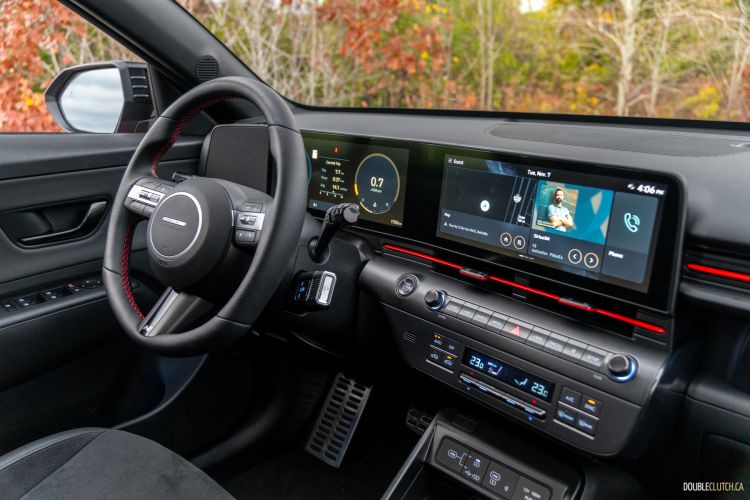
The rest of the interior sees improved materials all around. There’s still a fair bit of hard touchpoints throughout; it doesn’t feel as cheap as before, but competitors like the Mazda CX-30 feel much more upscale. The N-Line gets seats upholstered in leather and Alcantara with red trim throughout, extending along the dashboard and with red stitching to match throughout.
The N-Line uses two 12.3-inch displays up front — one for the gauge cluster, the other for the infotainment. If you’ve been in any Hyundai over the last couple of years, the infotainment is very intuitive overall. The lack of wireless Apple CarPlay and Android Auto in some top-trim Hyundai, Kia, and Genesis vehicles has been somewhat of a sticking point — and the Kona N-Line is no exception, despite it being standard on lesser trims — but Hyundai says an update is coming next year. In the meantime, don’t toss that cable.

You could be mistaken for thinking the 2024 Kona N-Line’s powertrain has been carried over from last year, but Hyundai made some tweaks. It now produces 190 horsepower — five fewer ponies than before — and an identical 195 pound-feet of torque, but it arrives 500 rpm sooner, so you don’t have to wring it out as much as before. In addition, Hyundai replaced the seven-speed dual-clutch automatic with a traditional eight-speed gearbox; it might lack a bit of oomph, but it’s much smoother-driving and should be more reliable in the long run. For those on a tighter budget and could care less about performance, the Kona’s three lesser trims come with a normally aspirated 2.0L four-cylinder engine, making 147 horsepower and paired to a CVT. With the 2024 Kona’s longer wheelbase and wider stance, ride quality is improved. The previous-generation Kona was a little stiff, but the new model feels much more comfortable, compliant, and quieter.
Thankfully, fuel economy remains respectable despite the size increases inside and out. Hyundai officially rates the Kona N-Line at 9.7 L/100 km in the city, 8.3 highway, and 9.9 combined. During my testing over mostly city driving, I achieved 9.9 L/100 km. Both the nomrally aspirated 2.0L and 1.6L turbo engines happily take regular-grade fuel, too.
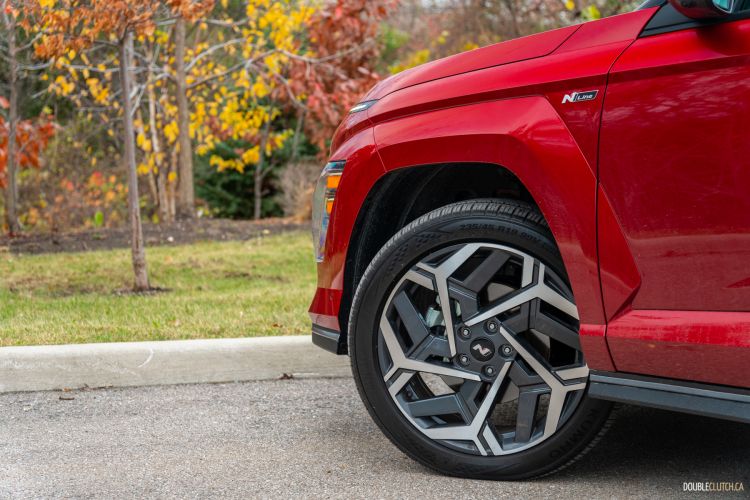
Pricing for the 2024 Kona ranges from $25,999 for a base Essential trim, running all the way up to $35,499 for the N-Line. Our tester included the Ultimate package, which adds $3,000 to the sticker price, bringing it up to $38,499 as-tested before any fees and taxes.
The redesigned Kona is a step in the right direction to remain relevant in such a competitive market. The fact that Hyundai started with an electric powertrain first shows they’re not playing around and intend to cover all their bases, no matter what consumers are looking for. With meaningful improvements to technology, interior space, and design, the 2024 Hyundai Kona N-Line ought to remain a winner.

